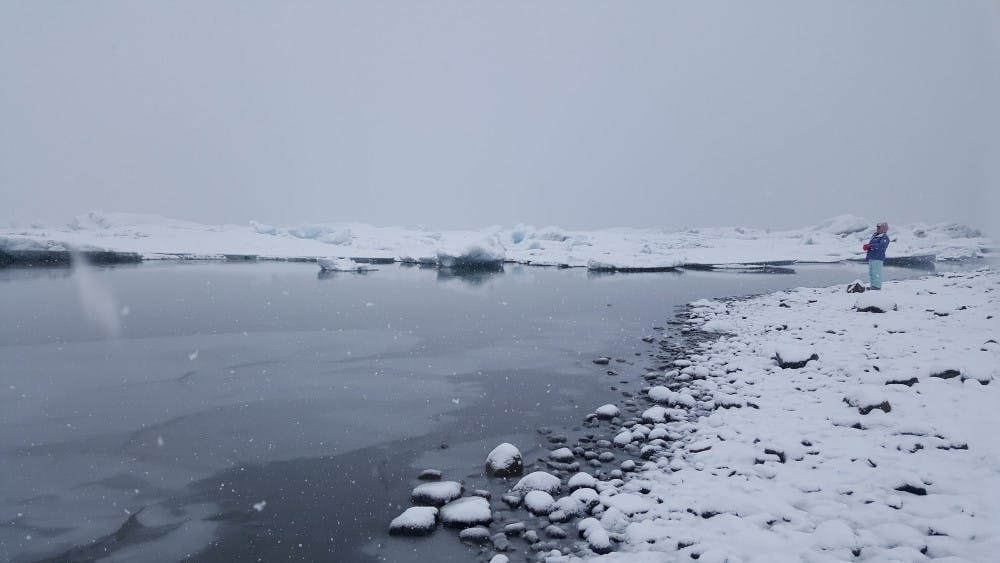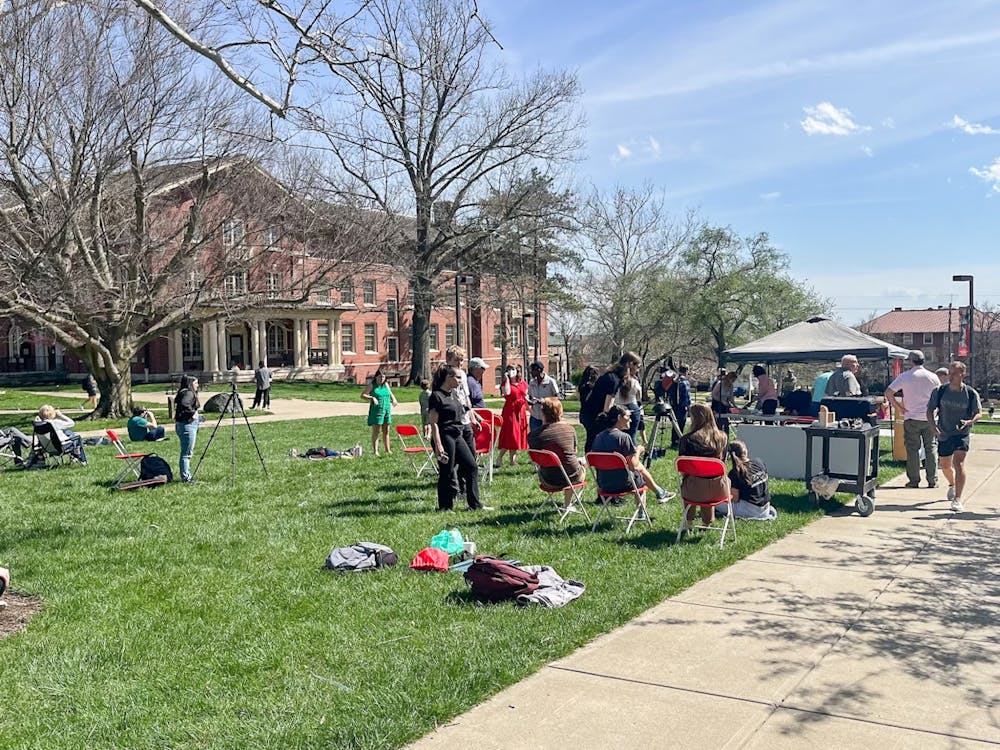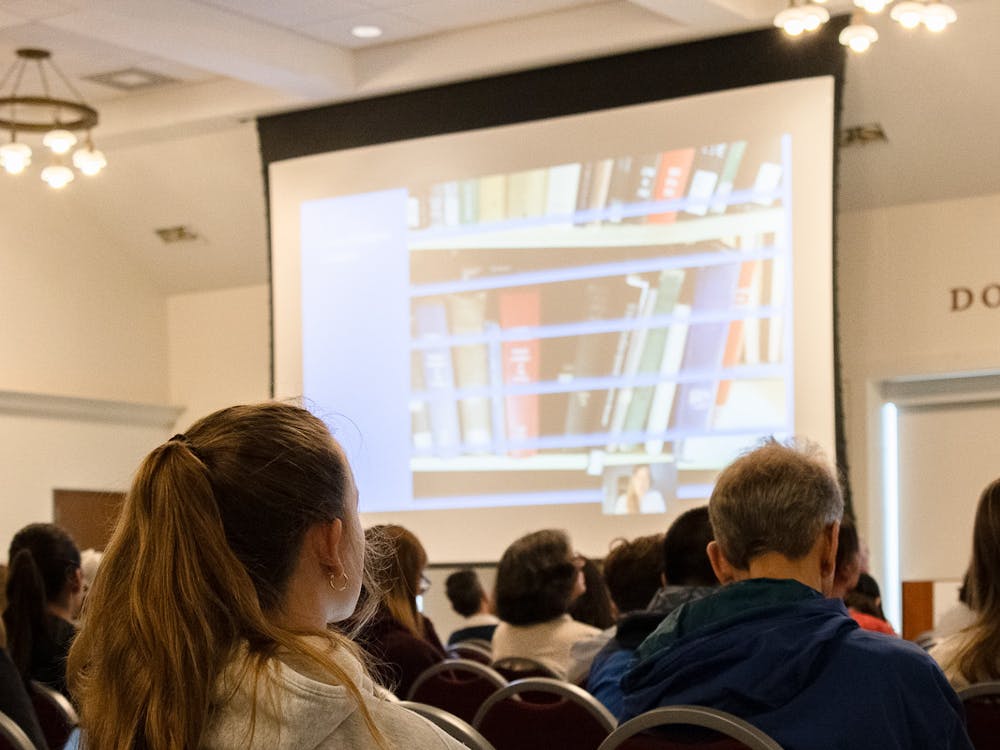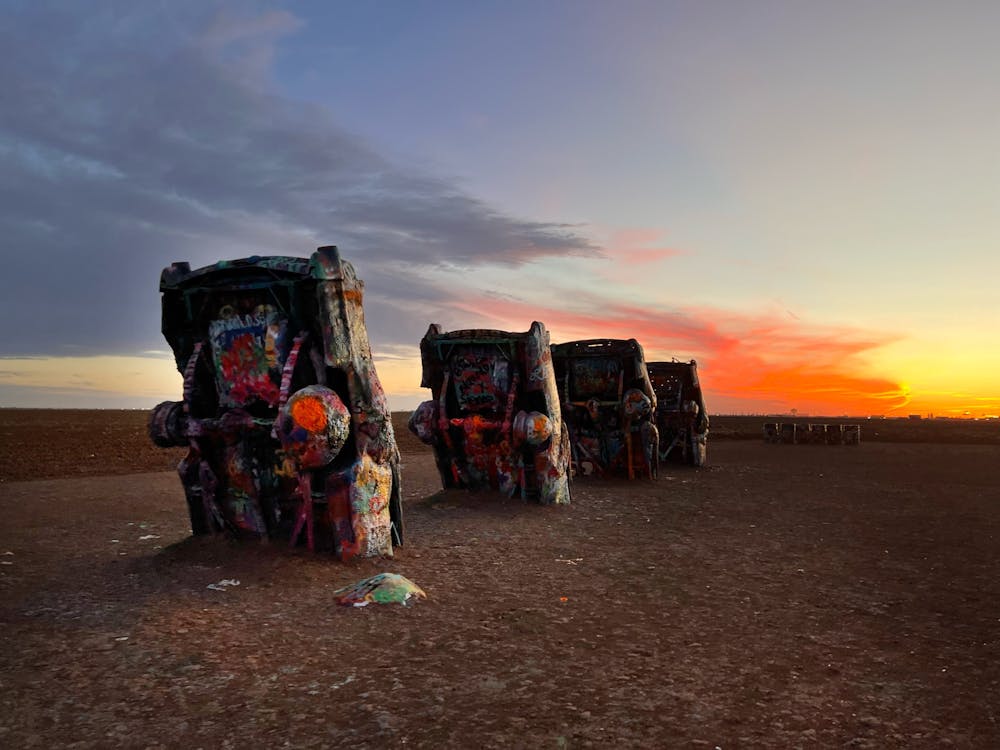JOeKULSARLON, Iceland -- I'd never seen icebergs before. I'd always imagined them covered in penguins or polar bears, layered with lazy seals and sea lions, resting. But at Joekulsarlon, an icy lagoon at the base of Iceland's Brei\0xF0amerkurjoekull Glacier, quiet pieces of ice floated bare, decidedly devoid of life. Some pieces, nearly sapphire blue in the haze of the falling snow, cracked and groaned ominously.
"Joekulsarlon is only about 80 years old," my friend read in her Lonely Planet travel guide on our way to the lagoon. The roads were slippery and our trusty two-wheel drive rental car was skating over them, barely sticking. Ahead, behind and to each side: a complete whiteout. We swerved and slipped along at half the speed limit.
It was the first bad weather we'd encountered in our trip, almost a reprieve from the beauty of the previous days. Often throughout our route I felt that we were driving in a car surrounded by a green screen, like stars in a low-budget movie. The impossible landscapes felt like a facade - even as we passed snow-covered lava fields, gigantic brown mountains looming like sentries over tiny farm houses, steaming geothermal hills and huge, bowl-like calderas, part of me was afraid to roll the windows down. Maybe then I'd see that there were men behind the magic.
Enroute to the lagoon, though, it felt like the green screen had stopped working. We were surrounded on all sides by white static, with maybe 10 meters of visibility. It was a wintery environment that made it hard to believe what we were reading in our guide - that Joekulsarlon was a direct product of climate change.
The ice in the lagoon is thousands of years old. But the water it floats in is only about as old as my grandfather. The 20th century chopped into the base of Brei\0xF0amerkurjoekull, the largest glacier in Europe, with unbelievable force, causing it to retreat anywhere from 30 to 70 meters per year in 1900s. When we finally arrived at the site, the glacier tongue had retreated nearly six kilometers from the sea.
"And now it's a tourist attraction," my friend said as we squinted against the snow into the blue-gray abyss of the lagoon.
We dodged past groups of people slipping along the black rocky shore. They grinned into clicking cameras, raising their arms wide like they were trying to fit the vast landscape into their arm span, their backs to the ice. They took rocks from the shore and blinked against the snow before leaving, disappointed with the powder covering the blue bergs. Bad picture weather.
I don't pretend to know anything about the Icelandic language. Most of the trip was a cacophony of the four of us mispronouncing rarities of nature, town names and roads we weren't supposed to drive on. But the little I do know is that the first part of the name Brei\0xF0amerkurjoekull, "brei\0xF0a," can be defined in a couple of ways. "Brei\0xF0a" is a form of the adjective "brei\0xF0ur," which means broad, spanning or wide. But it is also an infinitive verb which, combined with the right mix of words, means "to rumor."
As we walked further from the parking lot, tracing the minutely expanding shoreline of the lagoon, the snow blanketed the sounds of cameras behind us. A seal popped his head up, gliding gracefully through the water for air before dipping back beneath the blue. And in the quiet, I couldn't shake the feeling that the cracks and groans of the ice beyond the gray of the whiteout were whispers of something deeper, rumors of impending retreat.
More than the impossible landscapes we'd already seen, the white of the sky felt like the biggest facade we'd seen so far. The snow acted as a misleading reassurance that no, this lagoon was normal, these bits of ice were breaking off naturally, the cold is permanent.
But the ice, slowly filtering toward the sea, whispered rumors of something different: there really were men behind the magic, masters creating the vanishing act. I stood at the shore watching the ancient ice bump together, not so different from the rest of the tourists. Just another human, coming here to document the existence of the thing I helped create, before climbing back into the car, turning the ignition and skating back onto the road, away, as if I, as if we, could escape it.




